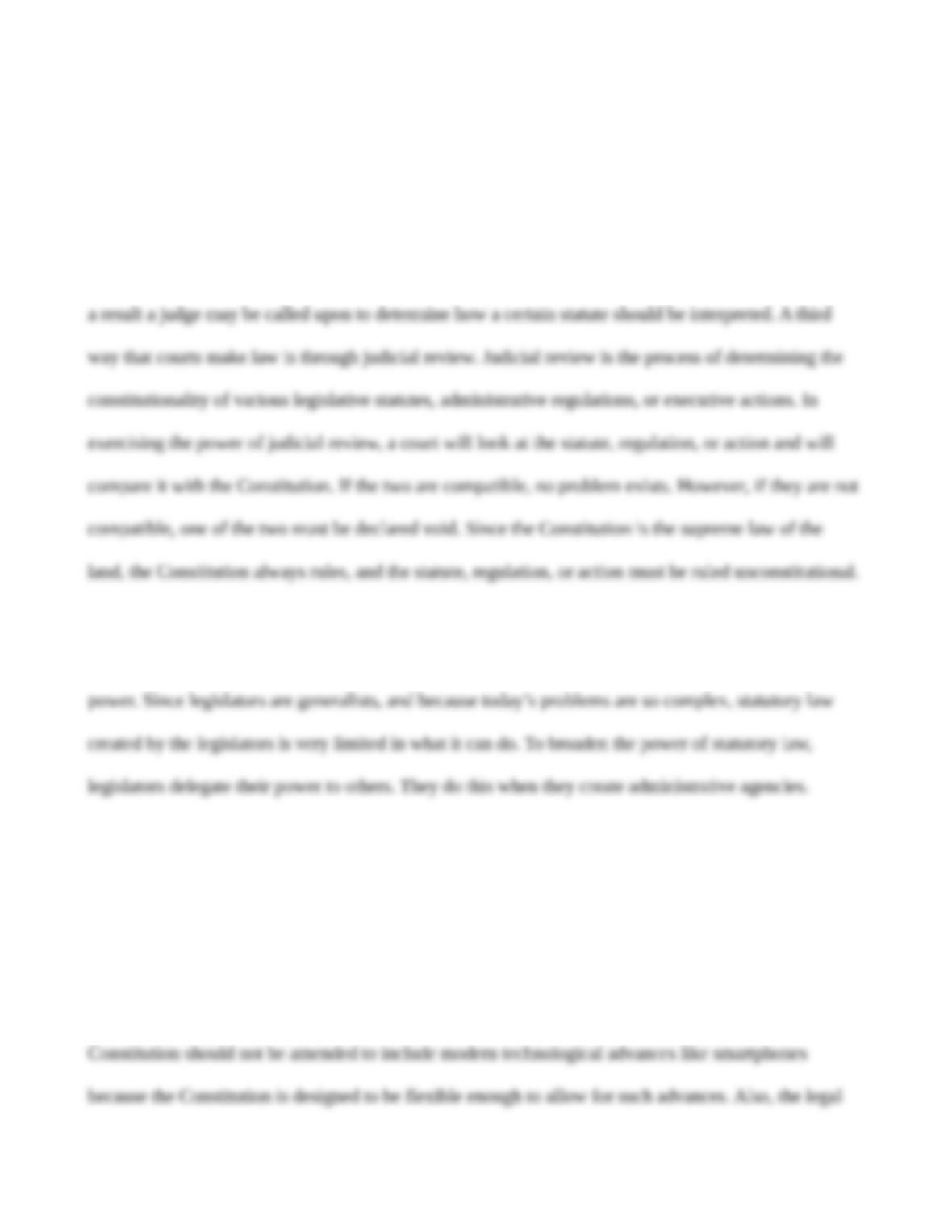3. The articles establish the organization of the national government. The first three of the seven
articles distribute the power of the government among the legislative, executive, and judicial branches.
Article I establishes Congress as the legislative (statute-making) branch of the government. Article II
gives the executive power to the President, and Article III gives judicial power to the Supreme Court
and other courts established by Congress. Article IV explains the relationships among the states, while
Article V outlines the methods for amending the Constitution. Article VI establishes the U.S.
Constitution, federal laws, and treaties as the supreme law of the land. Finally, Article VII outlines how
the original thirteen states would go about ratifying the new Constitution. The amendments change
4. Preemption is the process by which the courts decide that a federal statute takes precedence over a
5. The laws passed by a legislature are known as statutes. At the federal level these are the laws made
by Congress and signed by the President. At the state level, statutes are enacted by state legislatures
such as the Ohio General Assembly or the Oregon Legislative Assembly. Many statutes prohibit certain













